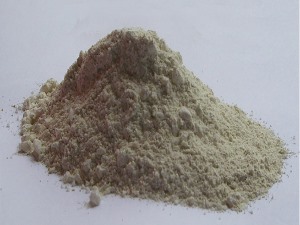What are the common misunderstandings of ramming materials in intermediate frequency furnaces
The intermediate frequency furnace ramming material is made of high-purity quartz and fused silica as the main raw materials, and composite additives are used as sintering agents; The knotting material is made of high-purity fused corundum, high-purity fused magnesia, and high-purity spinel as the main raw materials, and composite additives as sintering agents.
Acidic, neutral and alkaline kneading materials are widely used in coreless intermediate frequency furnaces and cored induction furnaces, as intermediate frequency furnace kneading materials for melting gray cast iron, ductile iron, malleable iron, vermicular graphite iron and cast iron alloys , molten carbon steel, alloy steel, high manganese steel, tool steel, heat-resistant steel, stainless steel, molten aluminum and its alloys, molten copper, brass, cupronickel and bronze and other copper alloys.
Intermediate frequency furnace ramming materials have a wide range of applications. Whether it is cast iron, cast steel, cast copper, ductile iron, ironmaking plants, etc., intermediate frequency furnace ramming materials will be used. There are many misunderstandings when using intermediate frequency furnace ramming materials. Some people think that When choosing quartz sand for charging, white quartz sand should be used as the raw material. Some people think that the finer the better, and some say that only powder is needed. Some of them are because they feel that the furnace age is good after using fine materials, so they always choose fine materials instead of relatively coarse materials. This is a misunderstanding.
Now, the main requirements for quartz sand raw materials are several factors. One is the content of silicon and the content of 2 silicon oxide. The 2 silicon oxide must be above 99 percent, and the higher the refractoriness, the better. The ratio, the finer the better or the thicker the better. This should be analyzed in detail. No matter how good the data is, it is assumed that the furnace is not good, and the furnace age is not high. Therefore, when you use it, in addition to The ramming material of the intermediate frequency furnace must be purchased from a suitable manufacturer, and the furnace and oven must be strictly implemented in strict accordance with the instructions given by the manufacturer.

Related Industry Knowledge
- Features and Benefits of Coil Clay
- What are the advantages of a good furnace lining
- Misunderstandings in the use of ramming materials in intermediate frequency furnaces
- Phenomenon analysis of failure of argon blowing of ladle permeable bricks and how to improve the rate of argon blowing
- Where is the consumption reduction and energy saving of breathable bricks reflected?
- How to improve the service life of intermediate frequency furnace lining
- Reasons for damage to intermediate frequency furnace lining and how to solve them
- The performance and advantages of breathable brick
- Analysis of Structural Characteristics of Dispersive Breathable Bricks
- The intermediate frequency furnace charge knotting process needs to pay attention to details sharing
- Intermediate frequency furnace ramming material through the furnace
- What is the knotting process of wear-resistant ramming material?
- Selection of Furnace Lining Material and Analysis of Factors Effectively Improving the Life of Electric Furnace
- Notes on the knotting process of wear-resistant ramming material
- What are the aspects of chemical corrosion of ramming materials?
- The conditions required for the selection of intermediate frequency furnace lining materials
- Another function of the ramming material, as a binder
- The effect of using ramming material
- Reasons for the stable quality and performance of breathable bricks
- The use of breathable bricks


